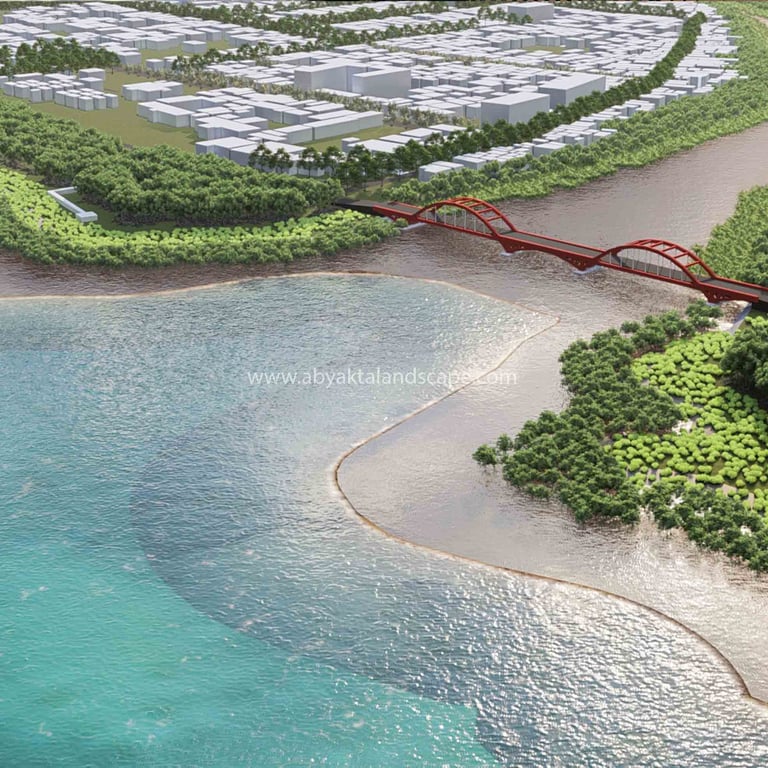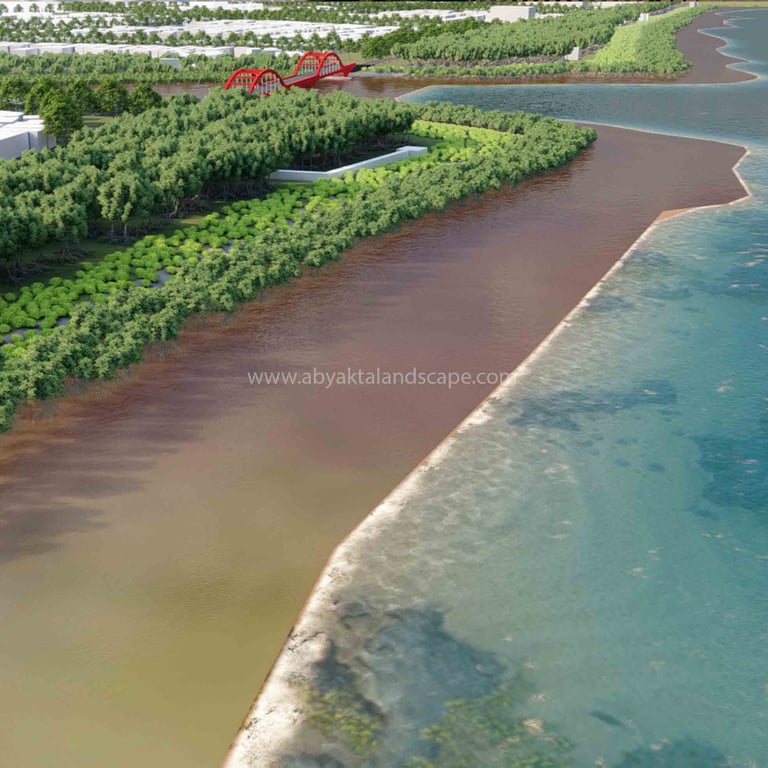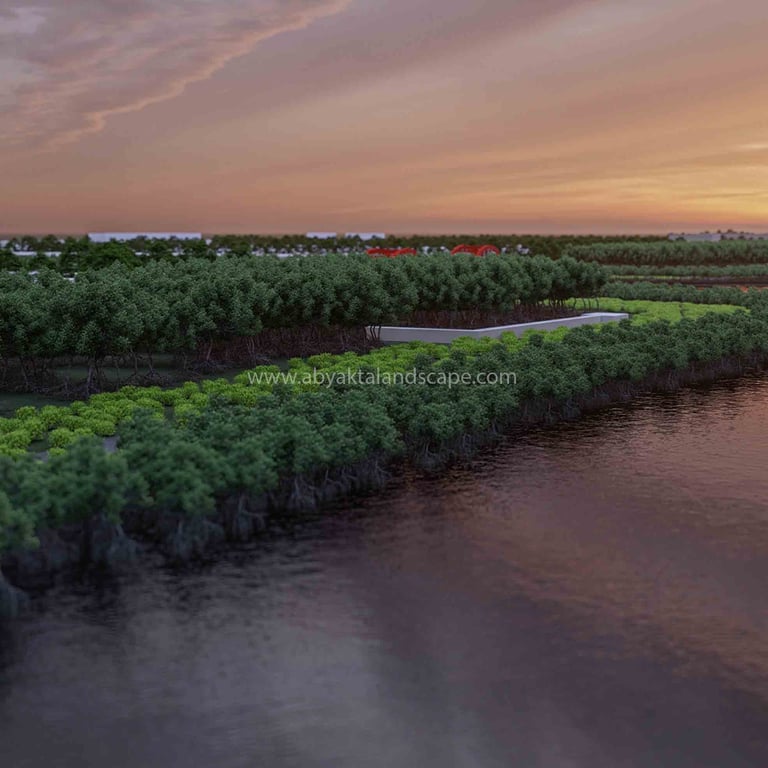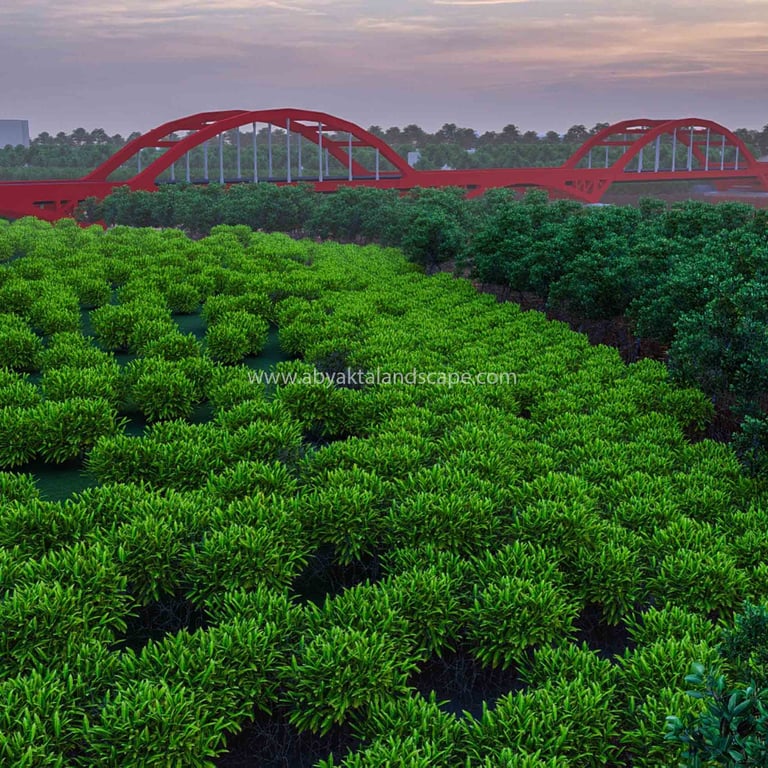Coastal Vegetation as a Lifeline: A Tsunami Mitigation Strategy for Palu City
Palu City, with its stunning coastal landscapes and vibrant communities, faces a significant and ever-present threat: the risk of a tsunami.
Abyakta Landscape
10/2/20193 min read
Palu City, located along the scenic coastline of Central Sulawesi, Indonesia, is renowned for its breathtaking natural beauty, cultural richness, and vibrant coastal communities. However, beneath this picturesque facade lies a persistent and life-threatening challenge: the risk of tsunamis. The tragic events of the 2018 earthquake and tsunami served as a stark reminder of the city’s vulnerability to such natural disasters. The devastation left behind highlighted the urgent need for comprehensive and sustainable strategies to mitigate future risks and protect the lives, livelihoods, and environment of Palu’s residents. Among the most promising and environmentally sound approaches to tsunami mitigation is the strategic planning and implementation of coastal vegetation. This method leverages nature-based solutions to reduce the destructive impacts of tsunamis while simultaneously enhancing biodiversity, supporting ecosystem services, and promoting social well-being. At the core of this strategy lies the restoration and conservation of mangrove forests—an invaluable asset in the battle against coastal disasters.
Mangroves are uniquely adapted to thrive in the intertidal zones where land and sea meet. With their dense root systems and resilient structures, mangroves act as natural buffers, absorbing and dissipating the energy of incoming waves, including those generated by tsunamis. Unlike artificial barriers such as seawalls, which may deteriorate over time and often require costly maintenance, mangroves provide a living, self-sustaining defense system. Their ability to slow down water flow and reduce wave height significantly mitigates the physical force of tsunamis before they reach inland areas. As such, mangroves are widely recognized by scientists and disaster risk reduction experts as one of the most effective biological defenses available. Yet, the benefits of mangrove ecosystems extend well beyond their protective capabilities. They are vital to the ecological health of coastal areas, supporting an astonishing array of biodiversity. These habitats serve as breeding grounds and nurseries for numerous marine species, including fish, crabs, and shrimp, many of which are economically important to local communities. Additionally, mangroves help to stabilize shorelines, prevent erosion, sequester large amounts of carbon, and improve water quality by filtering pollutants. In doing so, they contribute to climate change mitigation and adaptation—an increasingly important consideration for coastal cities like Palu.
To fully harness the protective and ecological benefits of coastal vegetation, a well-coordinated and evidence-based planning process is essential. In Palu City, this begins with a comprehensive assessment of the current condition of the coastal environment. Mapping and identifying vulnerable zones, degraded areas, and erosion-prone sections of the coastline are critical first steps. This data-driven approach allows for targeted interventions that prioritize the most at-risk locations. A successful coastal vegetation plan must go beyond mangroves alone. A diverse range of salt-tolerant plant species—including coastal grasses, shrubs, and trees—should be integrated to create a multi-layered green barrier. Each vegetation type plays a specific role: grasses and ground cover plants can reduce surface water runoff and trap sediments, while taller shrubs and trees provide windbreaks and additional wave attenuation. This layered strategy increases the resilience and effectiveness of the greenbelt in mitigating tsunami impacts.
Equally important is ensuring that the design and implementation of coastal vegetation projects are sensitive to the local social and cultural context. Community involvement should be prioritized from the outset, as local knowledge and stewardship are key to long-term success. Educational programs, public awareness campaigns, and participatory planning workshops can help foster a sense of ownership and responsibility among residents. When people understand the value of coastal ecosystems, they are more likely to protect and maintain them. Moreover, integrating recreational and aesthetic elements into coastal vegetation zones can enhance their acceptance and usability. For example, the inclusion of nature trails, observation decks, educational signage, and seating areas can transform green buffers into multifunctional public spaces. These areas not only serve as protective infrastructure but also promote ecotourism, community engagement, and mental well-being through interaction with nature. Another critical consideration is the long-term monitoring and maintenance of planted areas. Coastal vegetation systems require time to mature and become fully effective. Regular assessments, replanting as needed, and adaptive management strategies will ensure their continued health and functionality. Local governments, environmental organizations, and academic institutions can collaborate to establish monitoring programs and provide technical support.
Palu City's path toward greater resilience and safety lies in harmonizing development with nature. By prioritizing the restoration and strategic planning of coastal vegetation—especially mangrove forests—the city can significantly reduce the risk of future tsunamis while also reaping a host of ecological, economic, and social benefits. This nature-based solution aligns with global best practices in disaster risk reduction and sustainable coastal management, offering a model that can inspire other vulnerable coastal regions. Investing in green infrastructure today is not merely an act of environmental stewardship; it is a forward-looking commitment to safeguarding lives, protecting ecosystems, and building a resilient future for generations to come. Palu, with its spirit of recovery and community strength, has the potential to lead the way in demonstrating how living with nature, rather than against it, is the key to enduring coastal resilience.




ABYAKTA
PT Abyakta Bhumi Arya, established in 2019, is a landscape company based in Bogor, Indonesia. We are composed of licensed and experienced landscape team who are dedicated to both landscape design and construction. This dedication makes us a reliable partner for your landscape project. We collaborate closely with clients to understand their needs, preferences, and the unique characteristics of each site. This approach allows us to develop custom landscape designs that meet your specific goals.
CONTACT US
© 2019-2025 Abyakta Landscape. All Rights Reserved.
